Auger-Aliassime v Wolf: Firenze Final Analysis + weekly recap
Backhand competency—breaking the plane—Felix trends
Felix Auger-Aliassime (FAA) defeated J.J. Wolf 6/4 6/4 in the final of the Firenze Open ATP250 on Sunday. The win is the second title of the season for FAA and lifts the 22-year-old to 7th in the race to next month’s World Tour Finals to be held in Turin.
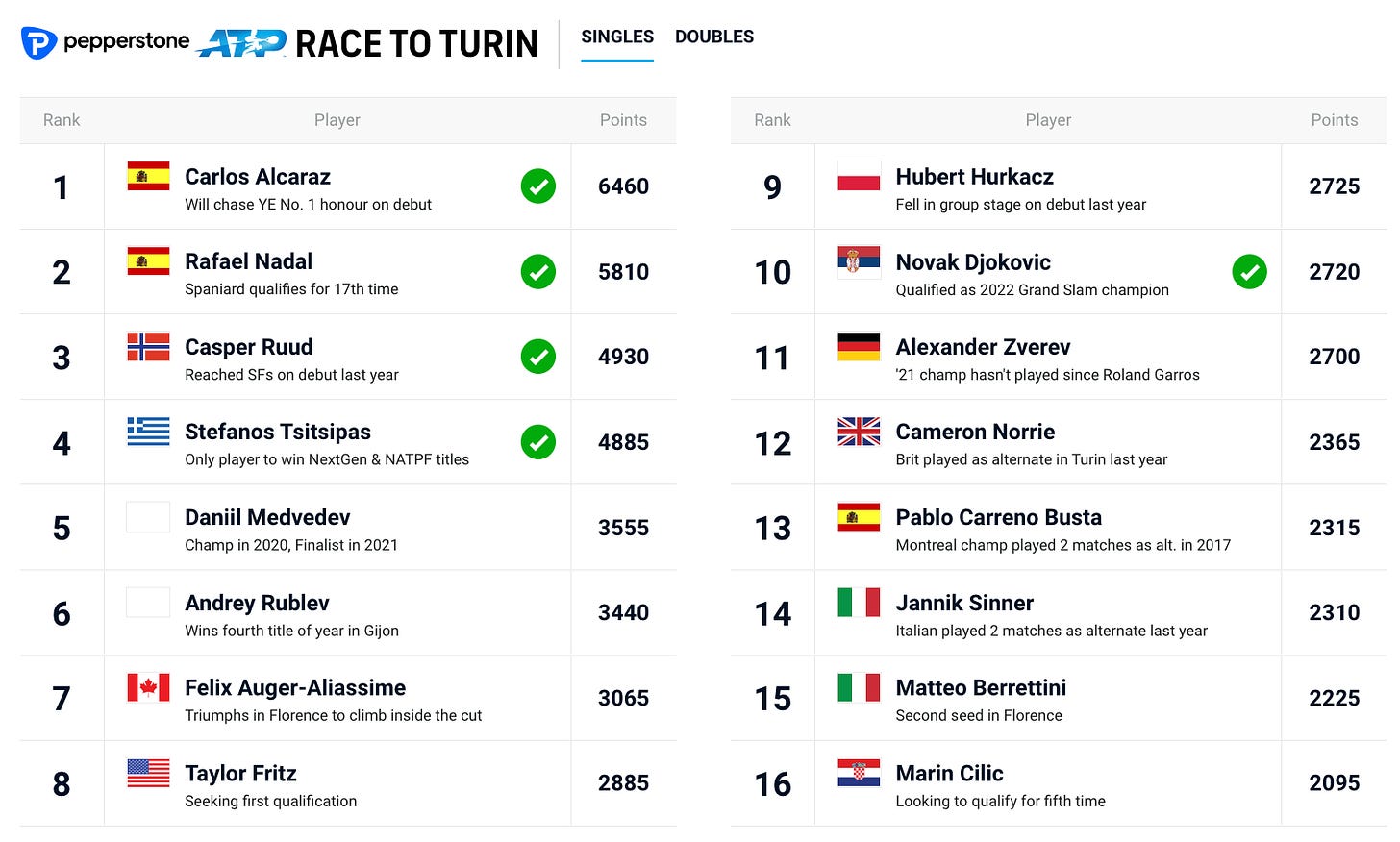
Backhand competency
The opening three games featured three breaks of serve, with Wolf misfiring on forehands, and FAA leaking errors off his backhand wing. As I’ve mentioned before on the FAA backhand, his initial set-up with the racquet head outside the hands means his swing is going to be ‘noisy’ and harder to time.1 Compare the two swing paths of Wolf and FAA below.
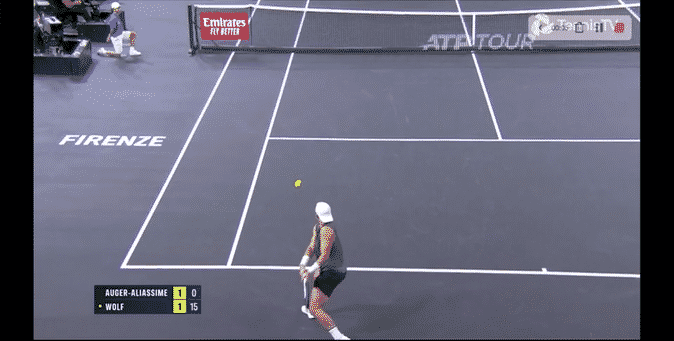
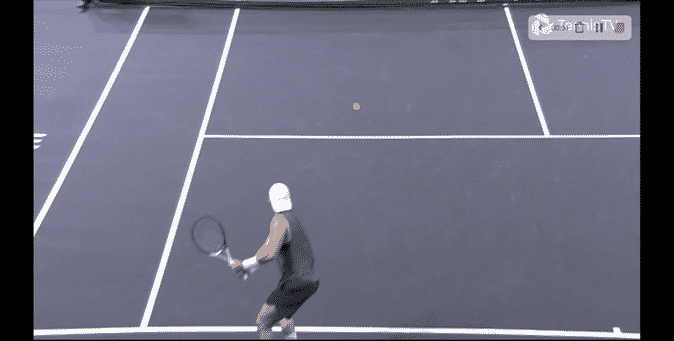
A look at the match stats shows a backhand performance completely in-line with what you would expect of the two techniques (and from prior analysis):
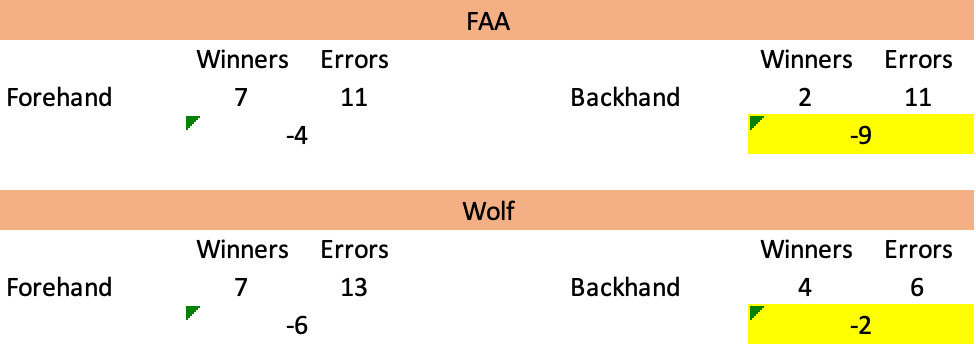
The video below from intuitive tennis does a great job explaining why you don’t want your racquet outside your hands on the two-handed backhand:
Patterns
The general pattern during rallies featured Wolf pressing hard in crosscourt backhand exchanges, and while FAA’s backhand held up relatively well, the key weakness in Wolf’s game was his inability to dictate with his forehand when presented with a slower or shorter ball. Wolf often had chances to hurt FAA but lacked the spin and dynamism on his forehand side and often struggled with FAA’s slice. While Wolf can inject huge pace in his forehand, I’m not a fan of his large backswing where he breaks the plane on the take-back.
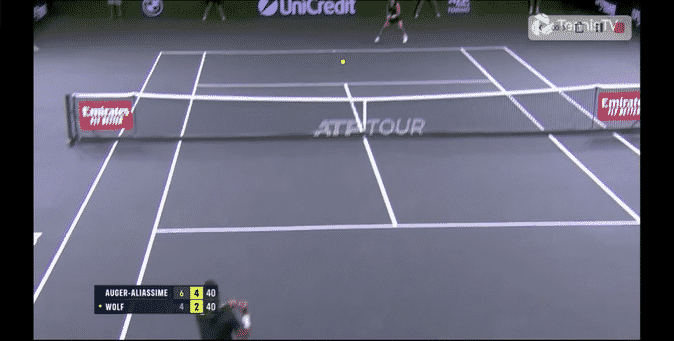
FAA had an incredible day on serve, firing 11 aces and winning 85% of first-serve points:
"I had a good start first game and then a bit of a tight first service game, but then after I felt like I was playing really good tennis, serving unbelievable. Probably the best [I served] all week, so just really happy right now."
Indoors FAA is a handful when serving like this, and I was impressed with his forehand; it did plenty of damage and didn’t bleed many errors, and his ability to run around the backhand and find forehands from the ad-side was hurting opponents all week. In this kind of form he can trouble anyone, but the backhand is still a weakness, and better players will expose that side, as they have done to many other “Serve + 1” players (Roddick, Berrettini, Tsitsipas, Rublev, etc.). As I have touched on here, the trend in recent years from the top ‘Nextgen’ crop has seen them serve better, but lack the technical proficiency off the ground that we saw from the Big-3 era. Former world number 3, Nikolay Davydenko, also noted this:
“In my opinion, tennis is not making much progress. The players who are at the top now – not Nadal and Djokovic, but the younger generation –are not that good technically. I got surprised by that. It’s more physical – big serves, hitting hard– but we still see that Nadal and Djokovic can control all this power over the new generation. They are still winning Slams and beating guys who are ten years younger than them, which is amazing. Anyway, I do not feel that the new generation is playing on an unbelievable level.”
A look at all of FAA’s matches last week in Firenze shows an improvement in the consistency of his backhand since his poor US Open match. Here we see he kept errors lower and did well with the forehand for the most part. (His serve was a huge weapon in every match also, and I thought he used the backhand slice well).
Semifinal
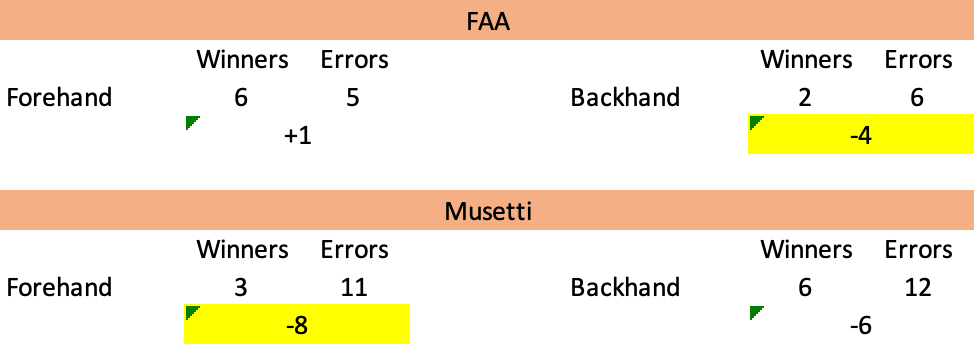
Quarterfinal
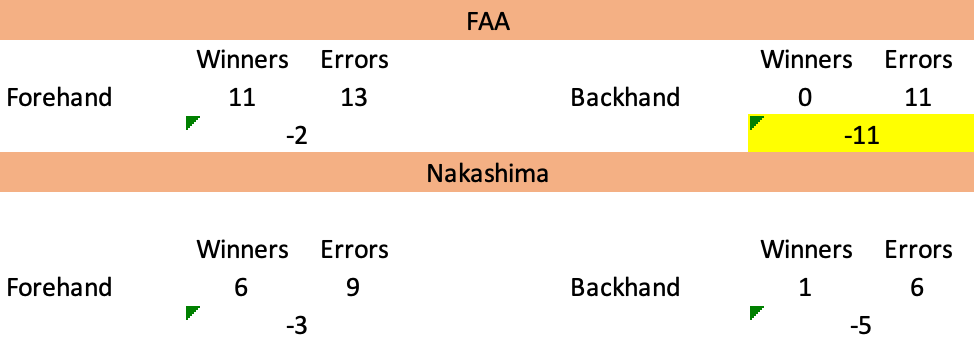
Round of 16
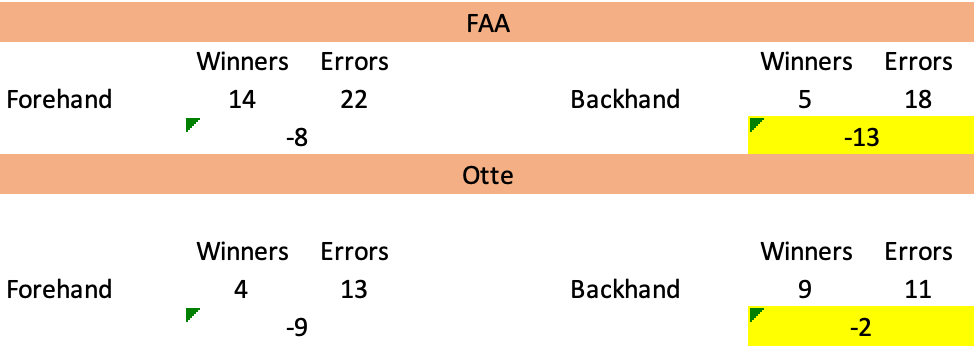
We can see that in most matches Felix is bleeding more points on his backhand than each opponent (besides Musetti who prefers the clay with his single-hander and who was forced to play hyper-aggressive against FAA). I statted all these matches to show the relationship between technique and competency, and that no amount of ‘confidence’ or footwork or experience can overcome a noisy swing over the long haul; it will simply miss more. At its core, sport is about who can produce the most competent actions. Against the very best, you can ill-afford to have a technical weakness if you want to win grand slams and reach the pinnacle of the sport. While FAA is a huge talent with a great serve, aggressive forehand, and calm determination, this backhand technique makes it harder to dominate the sport.2 Unless it changes I can’t see it ever becoming a major shield in the game. Biomechanics matter.
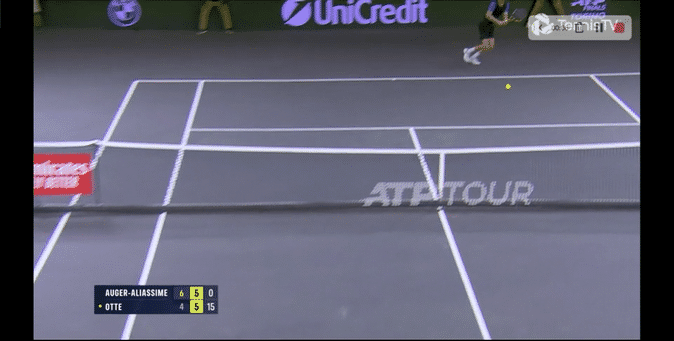
A quote from a prior piece on Sinner and Alcaraz’s techniques:
Of all the youngsters coming through, it has never been an issue of spin and power. Many people talk of a shot having a higher “margin of safety” (height over the net) and with more spin, but fail to recognise that it can come at the expense of a noisier swing; the swing has less margin for error in timing the ball. Medvedev has very little spin on his groundstrokes, but is extremely consistent because his strokes have high margins technically. These are nit-picky one-percenters, but one percent at this level is a huge difference.
And a final quote from a prior match analysis:
Good technique is more robust to changes in conditions, opponent, and mentality (nerves, fatigue). Over the years we have seen Federer take on a bigger racquet head to help his backhand and serve as he got older. We’ve seen Djokovic iron out the serve kinks from 2010 to now possess one of the smoothest spot-serves in the game with a delayed racquet head. We’ve seen Nadal improve his slice and volleys, often choking up on the grip to gain control. Thiem shortened his forehand swing and started to dominate the Big-3 on hardcourts. The very best are willing to make deliberate changes to equipment and technique if it means improving. They didn’t get better simply by playing the matches and assuming improvement would happen without deliberate practice. They battled, lost, analysed, and adapted.
We see this backhand work with flatter swing paths where the player doesn’t try and drop the racquet head under the ball too much: Norrie, Kyrgios, Paul, Tiafoe, Otte, etc. These players can take the ball extremely early with short swings and absorb pace off a very short swing.
I use the word ‘struggling’ when pitting FAA against fellow top-10 players. Djokovic, Nadal, Medvedev, Zverev, etc. can all expose that backhand. Of course, FAA played brilliantly this week and his backhand held up well considering it is his weaker side.


